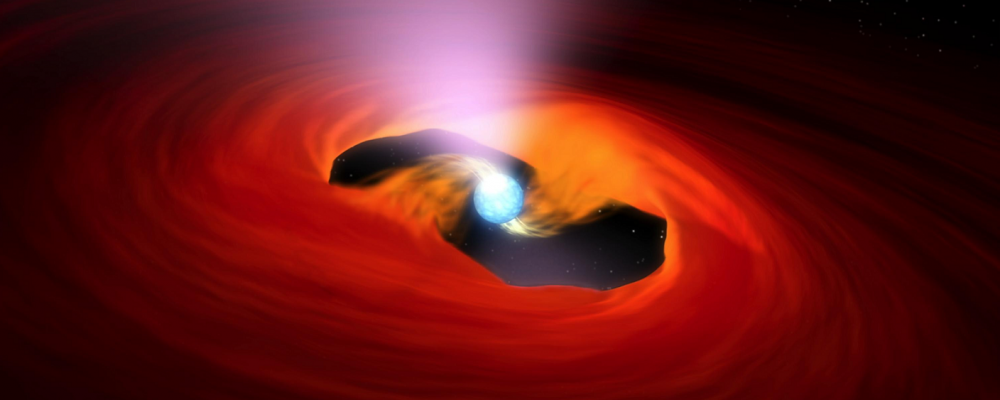For the first time ever, a team of researchers from NYU Abu Dhabi (NYUAD) and Monash University in Australia have observed the full process of material spiralling into a distant neutron star, which triggered a massive X-ray outburst thousands of times brighter than our Sun. The event has been observed in multiple frequencies, including high-sensitivity measurements in both optical and X-ray. The physics behind this ‘switching on’ process has eluded physicists for decades, partly because there are very few comprehensive observations of the phenomenon.
The researchers caught one of the accreting neutron star systems in the act of entering outburst. They witnessed the onset of the outburst, from the first sign of optical activity, to the beginning of X-ray emission, all the way to the end of the outburst. The observations revealed that it took 12 days for material to swirl inwards and collide with the neutron star, substantially longer than previously thought, with most theories suggesting there should be only a two to three day delay. The event was observed in multiple frequencies, including high-sensitivity measurements in both optical and X-ray.
The research, which has been submitted to Monthly Notices of the Royal Astronomical Society journal, has been presented at the American Astronomical Society meeting. The research was led by PhD candidate Adelle Goodwin from the Monash School of Physics and Astronomy, in collaboration with Associate Professor at Monash University Duncan Galloway and Assistant Professor of Physics at NYUAD David Russell, among other international researchers.
“We have been trying to identify an optical ‘precursor’ like this for several years. Last summer, we were lucky to spot this optical brightening in real-time, so we could alert the astronomical community fast enough for them to take early X-ray, ultraviolet and radio observations before the main outburst even started. This work enables us to shed some light on the physics of accreting neutron star systems, and to understand how these explosive outbursts are triggered in the first place, which has puzzled astronomers for a long time,” Russell said.
Goodwin commented: “These observations allow us to study the structure of the accretion disk, and determine how quickly and easily material can move inwards to the neutron star.
“Using multiple telescopes that are sensitive to light in different energies we were able to trace that the initial activity happened near the companion star, in the outer edges of the accretion disk. It took 12 days for the disk to be brought into the hot state and for material to spiral inward to the neutron star, and X-rays to be produced.”
In an ‘accreting’ neutron star system, a pulsar strips material away from a nearby star, forming an accretion disk of material spiralling in towards the pulsar, where it releases extraordinary amounts of energy – about the total energy output of the sun in 10 years, over the period of a few short weeks. This is so energetic that most of the radiation is released in the highest energy portion of the electromagnetic spectrum: in X-rays.
Some accreting neutron stars are not always active, and can spend years in a quiet state, known as quiescence, where they emit barely any light at all and accrete at a very low rate. They can suddenly go into an outburst and become extremely bright in X-rays for around a month.
The pulsar observed is SAX J1808.4−3658, which rotates at a rapid 400 times per second.
Accretion disks are usually made of hydrogen, but this particular object has a disk that is made up of 50 percent helium, more helium than most disks. Scientists think that this excess helium may be slowing down the heating of the disk because helium “burns” at a higher temperature, causing the “powering up” to take 12 days.
The scientists observed the phenomenon in an international collaborative effort involving five groups of researchers, seven telescopes (five on the ground and two in space), and 15 collaborators.
The telescopes involved the NeilsGehrels Swift X-ray Observatory, the Neutron Star Interior Composition Explorer (NICER) on the International Space Station (ISS), the ground based Las Cumbres Observatory (LCO) network of telescopes, and the South African Large Telescope (SALT).




